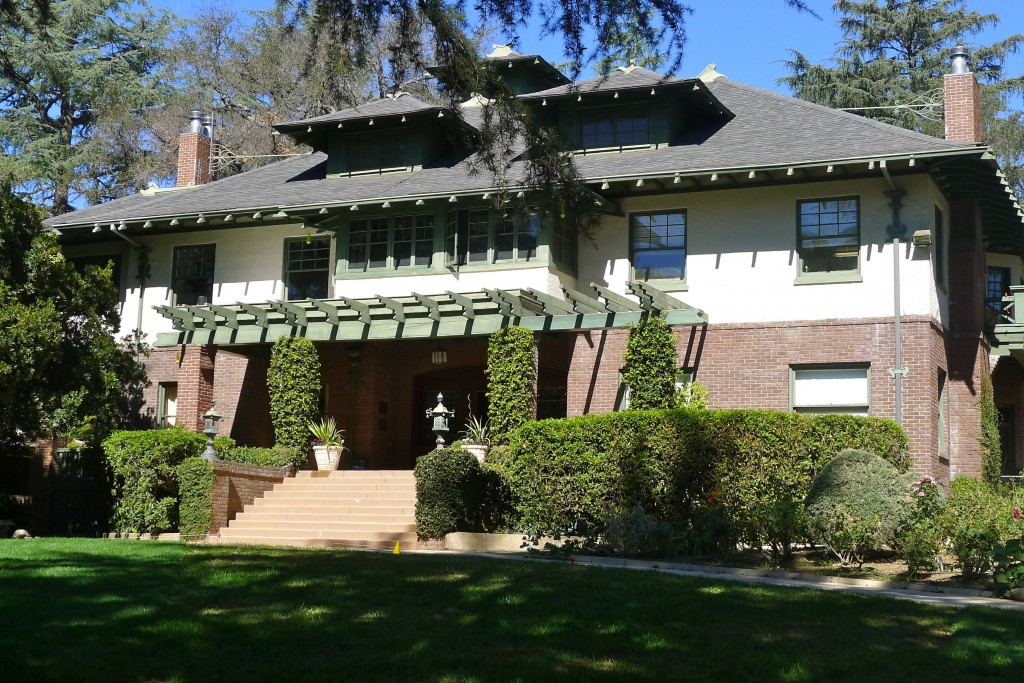
Opening the doors to a global world vision
Diane La Salle, the director of admissions at Pasadena Waldorf, occupies an office in a big, beautiful, rambling home with a bohemian feel that has been turned into administrative offices and the 4th grade classrooms for the school. Located on a quaint residential street, Pasadena Waldorf is a hideaway from the hustle and bustle of city life. On a very hot day recently, Diane welcomed me to her office on the second floor. A fomer Waldorf mom herself, Diane is extremely friendly, genuine and passionate about the school. We talked for 30 minutes about this intriguing school: its mission, the guiding Waldorf philosophy and specifics about the curriculum. Unique and fascinating, the school pays homage to Rudolph Steiner’s 90 year-old ideas, while embracing many current educational practices.
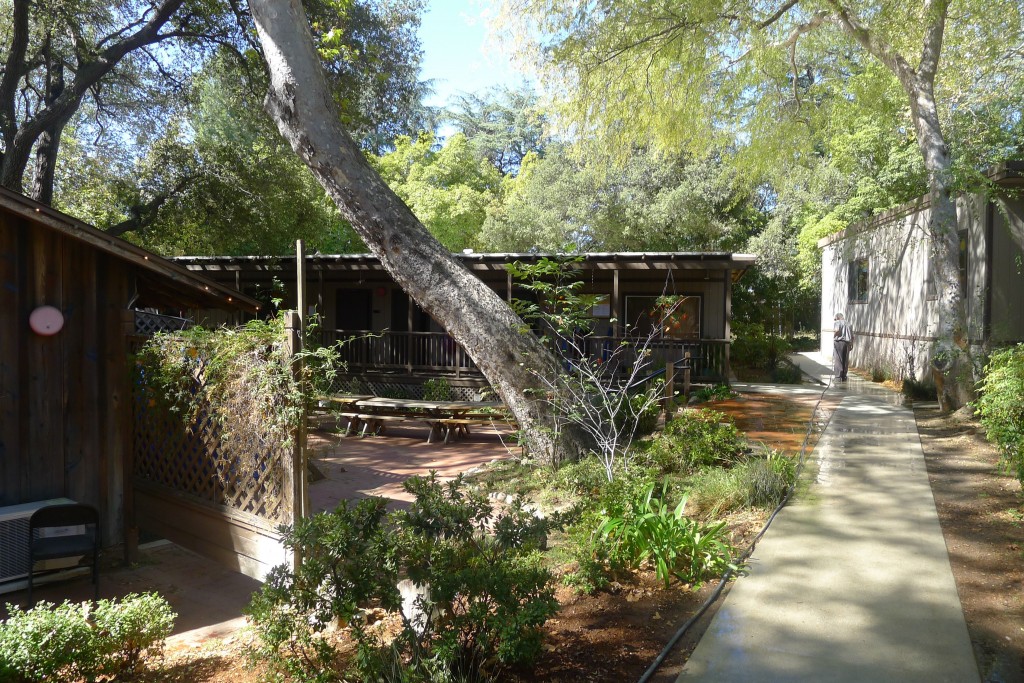
Waldorf schools take their name from a world-wide educational philosophy centered on the belief that nurturing both the imagination and the intellect are important to create a deep love of learning in children. Pasadena Waldorf is a developmental school, meaning that, “children learn in distinctly different ways at different stages of their development.” (Source: Waldorf materials). As Diane explained, the intellectual, physical, emotional and spiritual development of each child are all nurtured. This is essentially what is known as the whole child approach. However, Pasadena Waldorf is not a progressive school, Diane explained, although it shares many elements with progressive schools. For example, students at Pasadena Waldorf don’t call teachers by their first names as they do in progressive schools.
Interestingly, there is no head of school. The school is governed by its faculty and decisions are made by consensus. Weekly faculty meetings help sort out and identify issues involving students and curriculum.

Walking through the gorgeous 3 ½ acre campus, surrounded by enormous trees on a gently sloping hill, I was taken in by the beauty of the natural surroundings. The school is stunning in its pristine beauty. Classrooms are in located in rustic one-story bungalows. At the top of the campus is the renovated home that serves as the majestic entrance to the school. The middle school is up the hill from there. A newly opened high school resides at separate location.
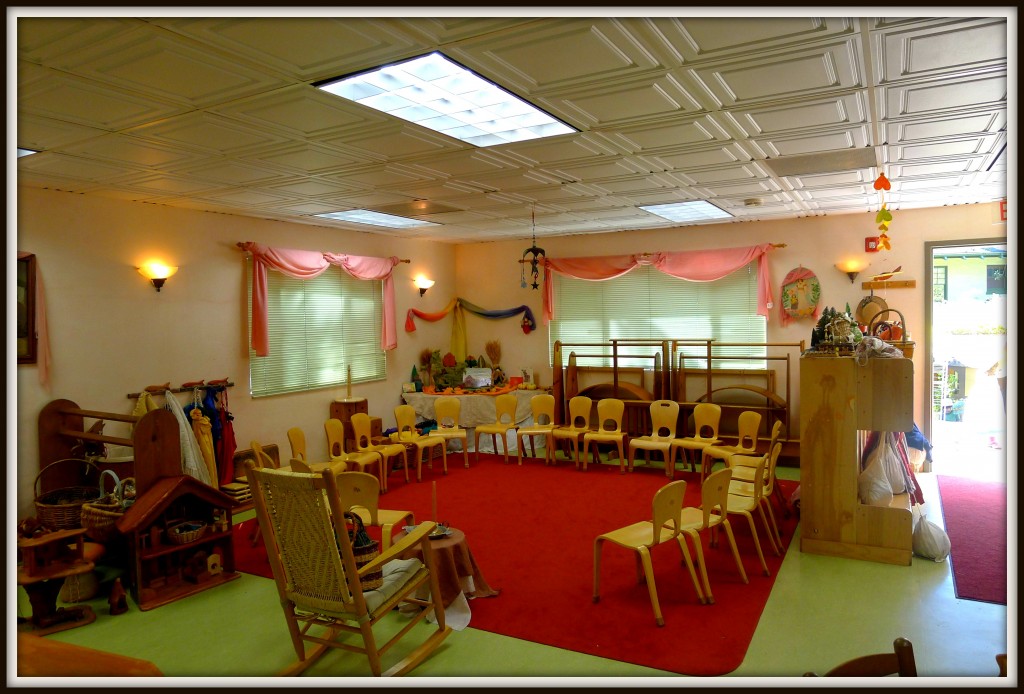
Pasadena Waldorf has a modern vintage vibe. Walking into the kindergarten classroom felt very nurturing. It is reminicient of a life-sized dollhouse. When we arrived, the teacher was setting up for story time while the kids played in the enclosed outdoor kindergarten play area. The retro feel of the school comes from many of the play and learning tools in the classroom, which are made largely of natural materials such as wood, stones and other found objects.
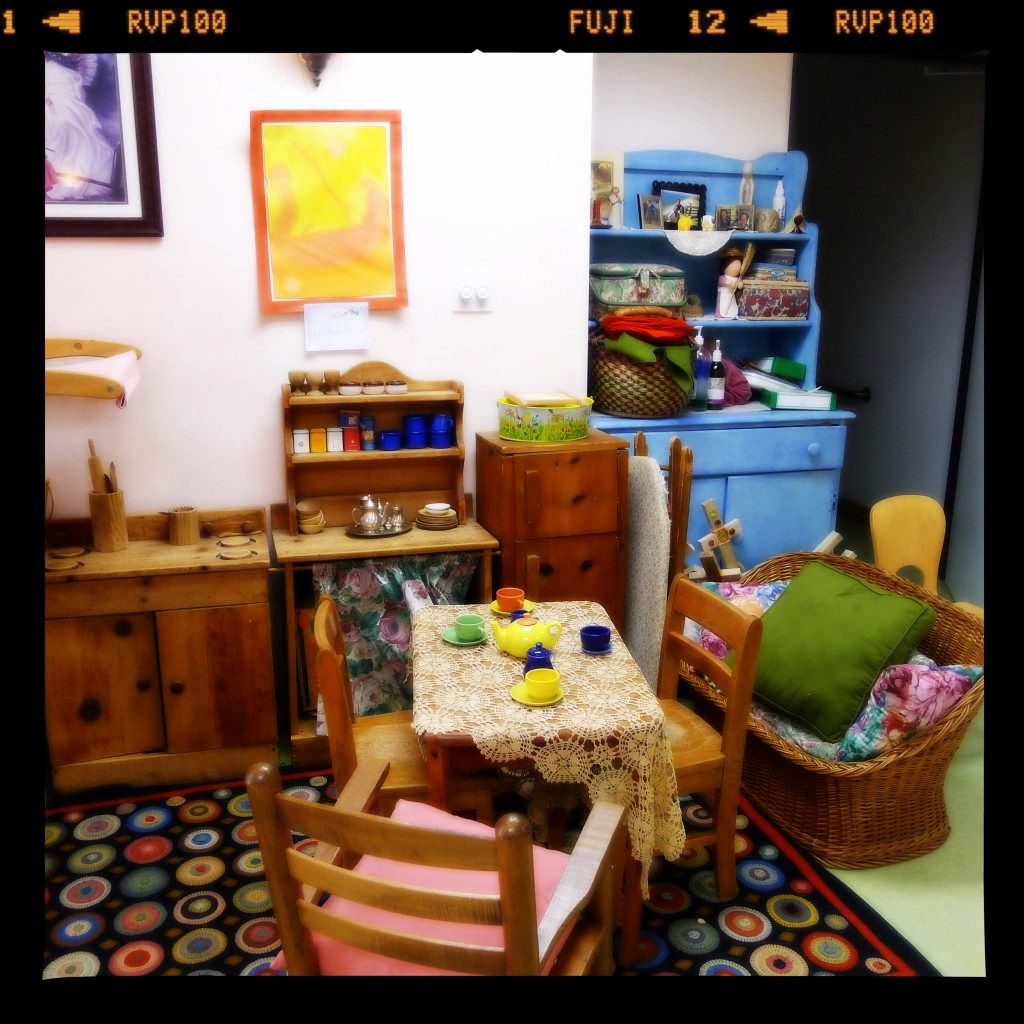
The main lesson is a two-hour block in the morning over a period of three to four weeks, focusing on one subject. Specialist teachers are responsible for music, languages, P.E., arts and other subjects. Hands on activities are important at Waldorf and the classroom is filled with imaginative activity centers. The power of childrens’ imaginations plays an important role in the classroom. In kindergarten, much of the teaching is done through teacher-led storytelling, without reading from a book. The teachers tell stories based on carefully selected books, while encouraging free play to both teach and inspire. Kids learn through baking, creating books, making snacks, gardening and doing handicrafts. The hands-on quality of the classroom gives one the sense that learning here is both serious and fun, organic and inspiring. Kids reach for the stars while learning the 3 Rs.
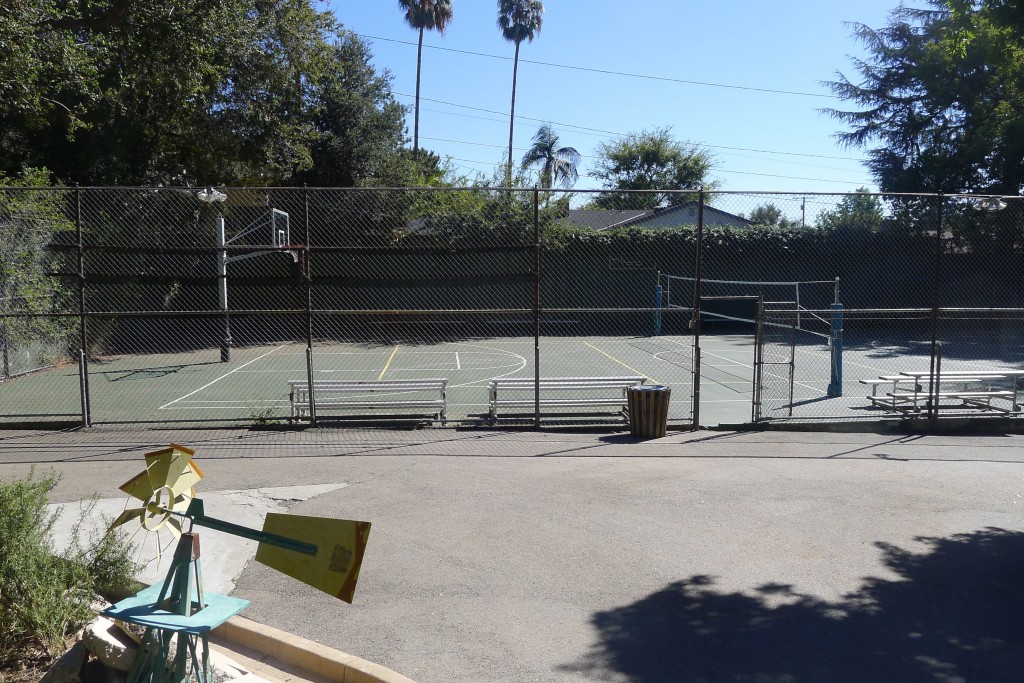
What you won’t see in the classrooms are computers or technology of any kind. Pasadena Waldorf is a tech-free zone until 9th grade. This is unusual in the world of private schools. But, it fits perfectly with the Waldorf method, which focuses on learning through play, imagination and hands-on experiences with natural materials.

Pasadena Waldorf is a structured school, but it is one without the intense academic pressure found in so many private elementary schools. One of my favorite aspects of the program is called “looping.” Teachers remain with their students from 1st to 8th grade, forging a deep bond and mutual understanding. There are two kindergarten classes, each with a teacher and an assistant for 20 kids per class.
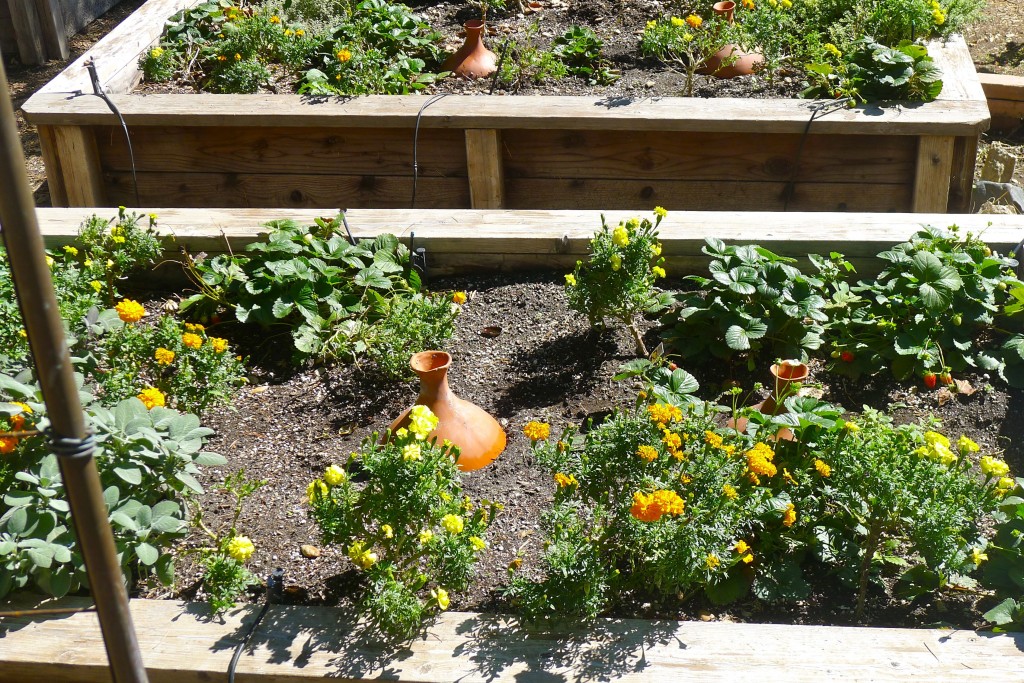
Until this year, when the school added its high school, Pasadena Waldorf students went on to 9th grade at The Waverly School, Flintridge Prep., Mayfield, St. Francis, and public schools. Families who attend Pasadena Waldorf live in Pasadena, Altadena, Los Feliz, La Canada and other locations.
My observations of Pasadena Waldorf are that it is a school filled with a love for teaching children to reach their fullest potential. A tried and true philosophy that instills the spirit of adventure radiates from every corner of the school. The educators here have seamlessly blended the past, present and future, creating a warm, nurturing school filled with imaginative elements created by– and for– kids. Attention to tiny details combined with a big picture focus on the world in which we live has created a school that is authentic and uncontrived. Encouraging students to dare to dream big is what makes this school so remarkable. Retaining the best elements of eras gone by while remaining just ahead of the educational curve is what Pasadena Waldorf is all about.
If you’re looking for a school with a distinctive vision, a stunning campus and a style of teaching that has the just the right mix of structure and freedom with a magical, homespun quality, this school might just fit your family’s wish-list.

The school’s super-popular Elves Fair is coming up on Sat. Nov. 17th. Admission is free and it the fair is open to the community. It includes music, crafts, games, food, a tea garden, a silent auction and puppet show. Best of all, you’ll get to visit the charming campus store that is stuffed full of amazing Waldorf educational objects and toys. www.elves-fair.com
For more information, visit, www.pasadenawaldorf.org

Turning Point School is a multi-faceted, developmental Preschool-8th grade school in Culver City.
Located on a gorgeously renovated movie studio, the campus has a hip, urban vibe, much like the famed Dalton School in New York City, where the classrooms are on multiple levels and stairs are used to access various levels within the interior of the building. Big windows flood rooms with light. Kids flow from the main building out onto an artificial turf athletic playing field, next to a garden and outdoor classroom.

Turning Point’s blueprint has inspired a school filled with colorful hues, spacious classrooms, dynamic teachers and a diverse student-body. The architecture of the campus is roomy enough for virtually every grade level to have its own space. Some areas, like the music room, are shared by multiple grades. The preschool has occupies a separate building.

Walking through the school with Christian Davis, the associate director of admissions, I felt like I’d encounter something magical around every corner. As we visited classrooms, I learned a lot about each part of the school. Smart Boards are a feature in every class. Music is central to the curriculum, starting in Primary with the xylophone. Wind instruments are introduced in 5th grade.
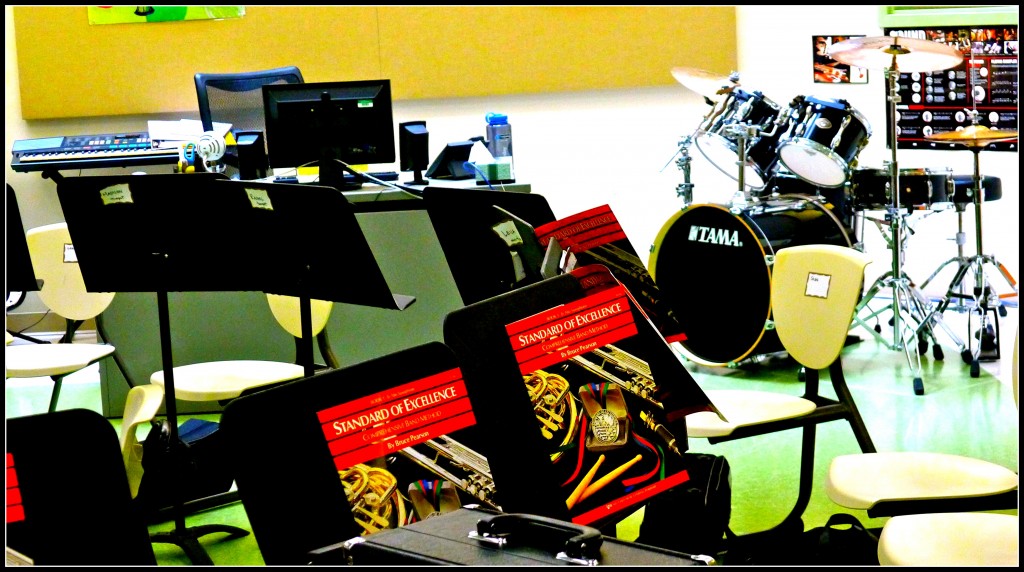
Touring with Christian, I quickly realized he’s the kind of admissions director parents shouldn’t be worried about calling to ask a question or just to touch base. He’s so nice! Easy going and accessible, he’s well versed in the school’s many programs. His manner instantly puts one at ease.

Head of School, Deborah Richman, has been with the school since its early days. She has been the driving force behind Turning Point’s impressive expansion. Her vision has created a modern school, valued by parents for its sense of community. Nothing about the school is antiquated or outdated. There’s a cutting edge-ness to it that I felt instinctively drawn to. From the kid-inspired kindergarten classrooms, to the language center and the outdoor classroom, layers of this energetic school unfolded before my eyes. It has a delightful, whimsical quality, reminiscent of an Alice in Wonderland adventure.

Turning Point is a developmental school with a Montessori based program for Primary and K-1. Mixed age classrooms are a key feature of the Montessori philosophy and Turning Point’s Kindergarten and 1st grades are separate, but interact during portions of the day. Students in Primary and K-1 remain with the same teacher and classmates, per the Montessori method. This gives kids the chance to learn independently, while collaborating with their peers and older kids. Then, when they become the oldest in the class, they take on a leadership role by mentoring younger children.

The Smart Lab
There’s definitely a “wow factor” when you walk into the The SmartLab. It is a highlight of the school and rather unique: it is one of two labs of its kind in Southern California. What is the SmartLab? It’s a hub of new technology where students get hands-on learning experience.
From Turning Point’s website:
“Students work in groups to exercise their creativity utilizing modern day technology while developing vital 21st century skills. The curriculum of the SmartLab emphasizes 8 systems of technology: science and data acquisition, mechanics and structures, robotics and control technology, circuitry, graphic design, multimedia and publishing, computer simulation, and renewable energy.”
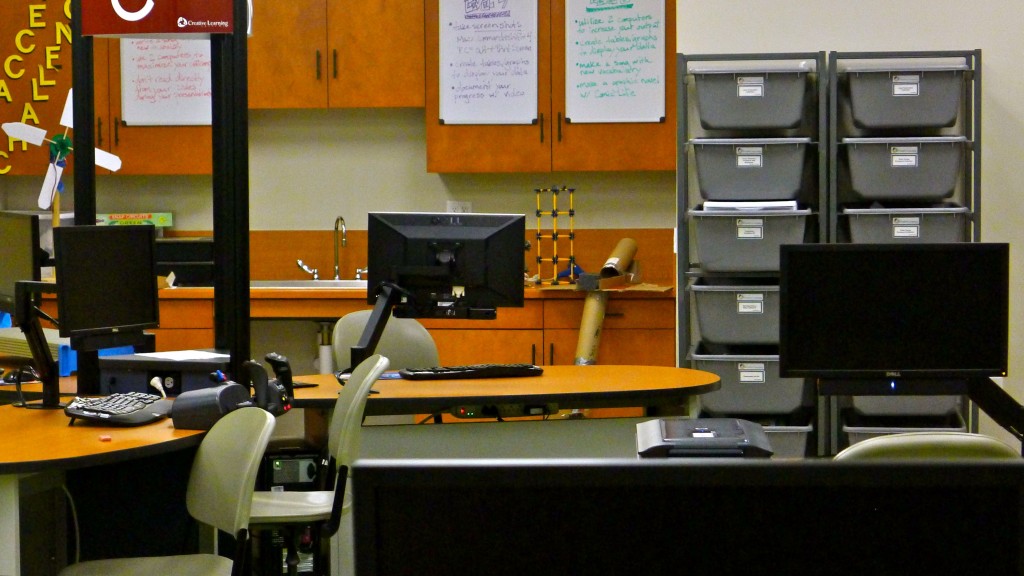
The Smart Lab teacher, a young guy named Travis, was enthusiastic as he talked to us about all the learning that’s happening in this mega-lab. SmartLab becomes part of the curriculum in 5th grade. It is offered as both an elective and a requirement in Middle School. It is also offered as an after school class and as an option in the summer specialists’ camp. Let’s just say the SmartLab caught my attention—and held it.
Theater Arts
The new theater gives Turning Point serious bragging rights. It’s a place for the performing arts that hits all the right notes! Generous families, including a heavily tattooed pop-rock star whose name adorns the building (due to his generous donation), made the theater possible.

Turning Point offers students all the extras, within an environment rich with the classics to foster each student’s talent. But, it hasn’t lost sight of its mission, which is to educate and nurture each student, focusing on the whole child. Perhaps the school’s mission statement says it best: “Turning Point provides a harmony between structure and freedom…”
The best way to describe Turning Point is substance without pretense. It’s a place where kids thrive in an effortlessly cool setting. Its very apparent that students at Turning Point are encouraged to be expressive, to get creative and challenge themselves in all aspects of their education. It’s a school where one size doesn’t fit all. That’s sure to please prospective kids and parent alike!
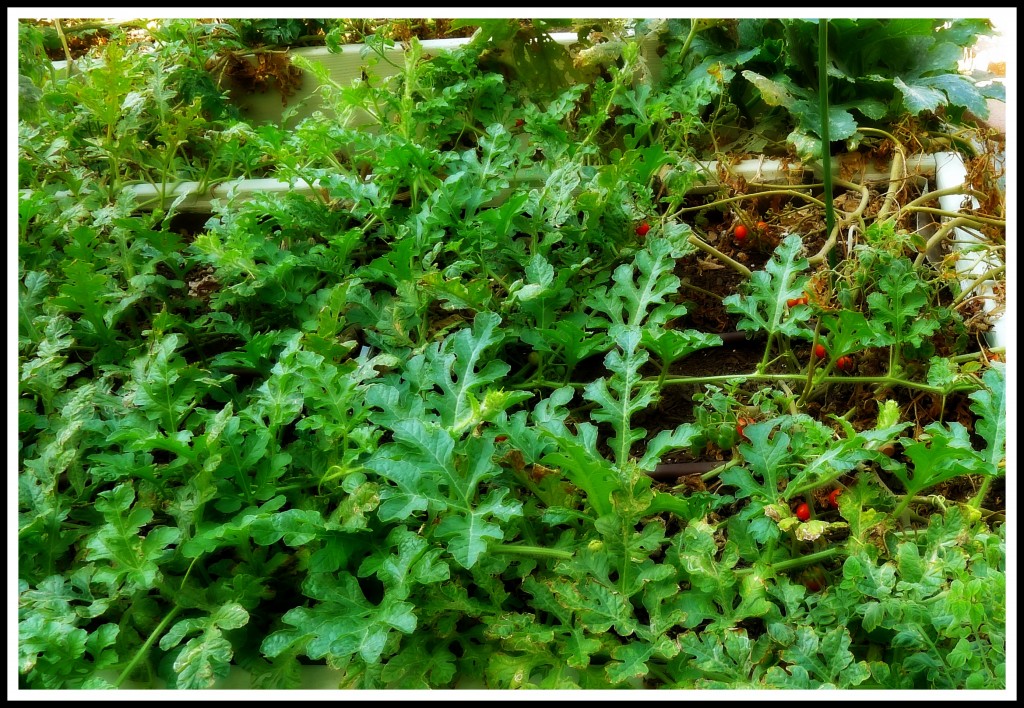
Upper School Acceptances for the Class of 2012 include: Brentwood, Buckley, Campbell Hall, Crossroads, Harvard Westlake, Loyola, Marlborough, Wildwood, Windward and more.
See the school! Open House, Saturday, Oct. 13, 2012 10 a.m.-12 noon.
For more information, visit, www.turningpointschool.org
The first thing any visitor notices upon arriving at St. Matthew’s Parish School in Pacific Palisades is the stunning campus where nature takes center stage on 30 acres in a beautiful park-like setting.
West Coast warmth infused with the gravitas of an East Coast prep school makes for just the right combination at this well-respected institution. Virtually everything about St. Matthew’s is reserved and understated. In our city of over-the-top lifestyles it is refreshing to see this quality in a school.

St. Matthew’s was founded in 1949, but it has been significantly updated. From the classrooms to the technology for learning (Smart Boards, iPads and more), St. Matthew’s has done an amazing job remodeling and rebuilding all of its 28 classrooms, the enormous library and virtually the entire campus, in part with a recently completed capital campaign. The look and feel of the campus is rustic and modern.
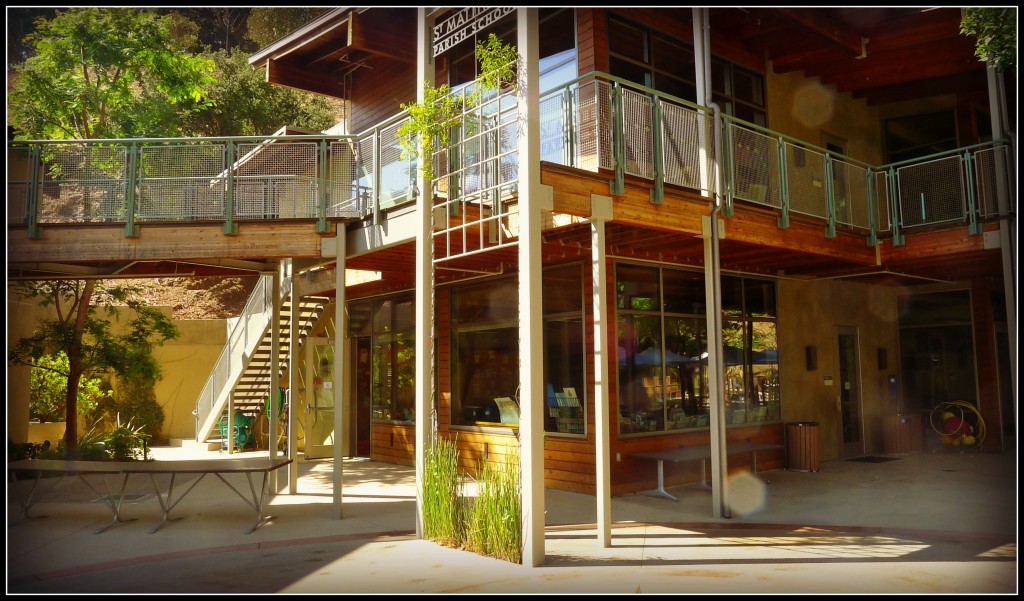
Head of School, Stuart Work (also known as Stu), and Jane Young, the principal, were generous with their time as I sat with them in Stu’s office talking about what make the school unique. Stu is thoughtful and articulate, with a firm handshake and a direct gaze. He is a former science teacher and accomplished administrator who adores kids and is obviously extremely proud of his school. He took the helm at St. Matthew’s in 2011. Walking around the campus, he seemed to know every student. Jane, a member of the St. Matthew’s community for more than 30 years, as an alumni parent and teacher, is warm, outgoing and approachable.
St. Matthew’s is a traditional school, both in its academic philosophy and its religious values. As part of the St. Matthew’s Parish, the school has embraced both spiritual growth—kids attend chapel and religious class each week—and rigorous academics, creating an enviable educational institution.
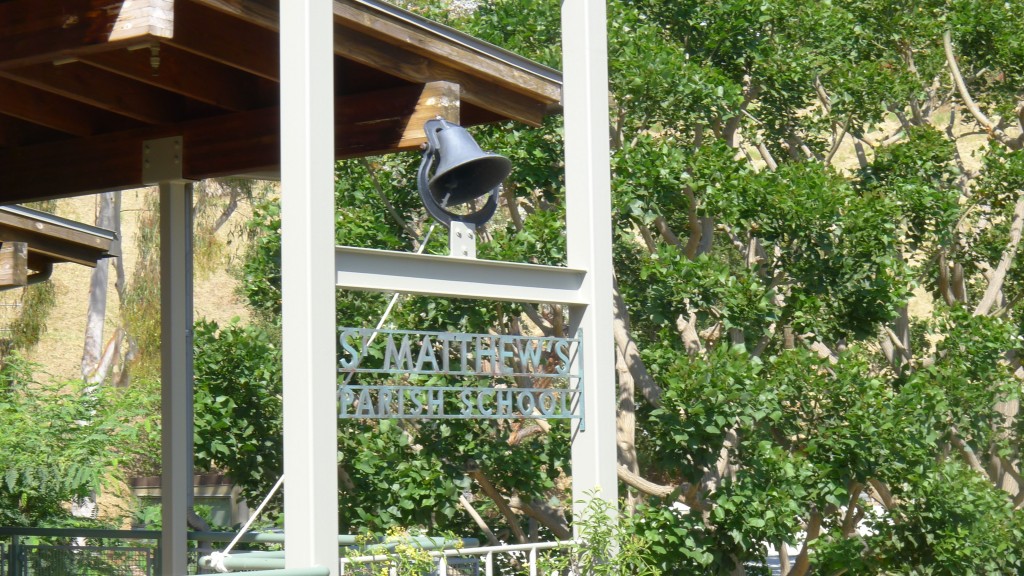
As Jane describes it, the school combines academics and a deep moral and spiritual foundation, rooted in its three faith-based elements: SERVE, LEAD, FLOURISH. Sixty percent of families belong to St. Matthew’s Parish, and there are a number of different religions at the school. All are welcome. The school is known in the community for being open to all faiths and very respectful.
St. Matthew’s is small (325 students total). There is one class per grade, with about 24 students and 2 teachers.
The kindergarten classroom is very spacious and bright. Natural light streams in from big windows giving the young students a glimpse of the outdoors as they learn. There is also a separate break-out room where they work on projects.
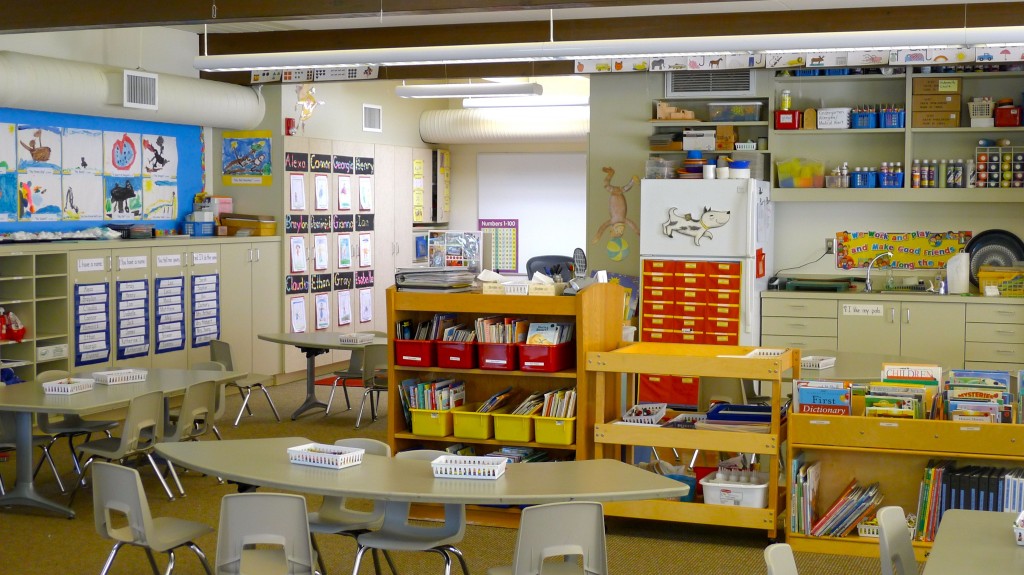

A room with a view: science room
St. Matthew’s embodies a strong tradition of community service for all students, which is integrated into the curriculum. Students participate in a variety of volunteer and service learning activities from partnerships with St. Anne School to raising money for an Episcopal school in Haiti to working in the St. Matthew’s thrift store in Venice.

Stu and Jane enthusiastically described one of the school’s signature programs: grant funding for teachers to visit places that correlate with the study units they teach. Costa Rica, Haiti and Africa are a few of the locations where 1st and 3rd grade teachers have traveled. Returning to St. Matthew’s, teachers bring back a deeper, first hand understanding of what they are teaching.
Walking through the various classrooms from K-middle school, touches of tradition are noticeable from the moment one enters the school. Classes are orderly, fairly structured and calm. Students wear uniforms and address their teachers by their last names, all hallmarks of a traditional school. Yet despite the fact that several classes were taking quizzes, students were friendly and welcoming to the head of school and his visitors.
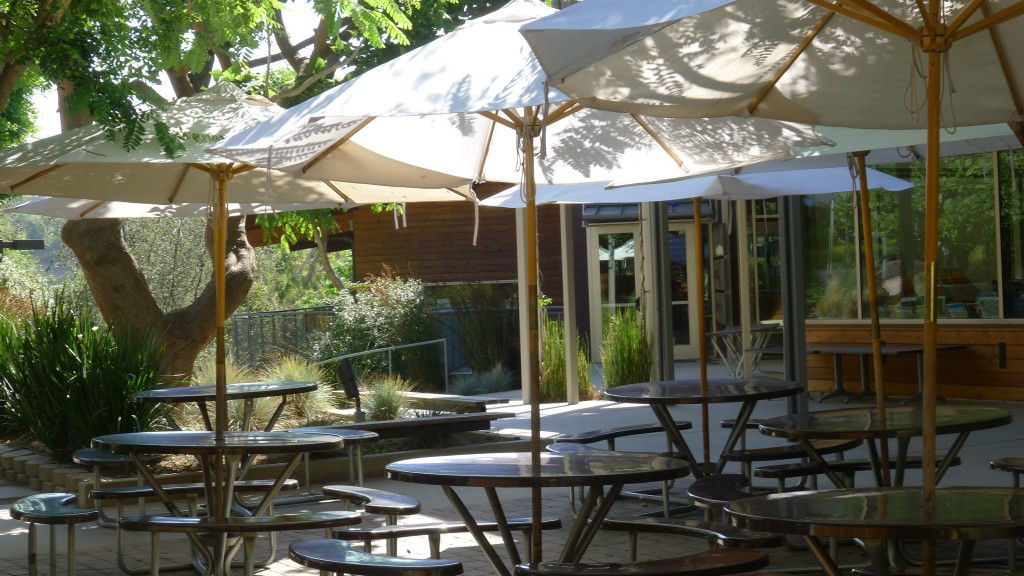
Leaving the kindergarten classroom, Jane pointed to an example of the school’s belief that mistakes happen and that’s fine. She pointed to the steps, where the artist who created them had inadvertently laid the wrong letters side by side. She explained that the artist offered immediately to fix the error. Instead, she told me they decided to leave it. Serious and focused, the school isn’t afraid to let its sense of humor show!
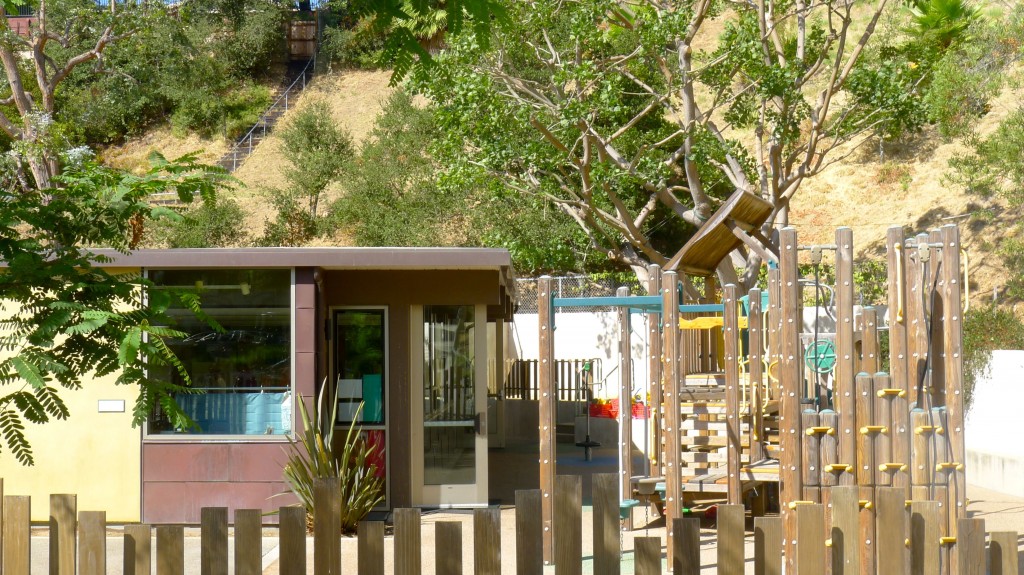
St. Matthews is recognized for its sports programs. Many athletes go on to play high school and college sports.
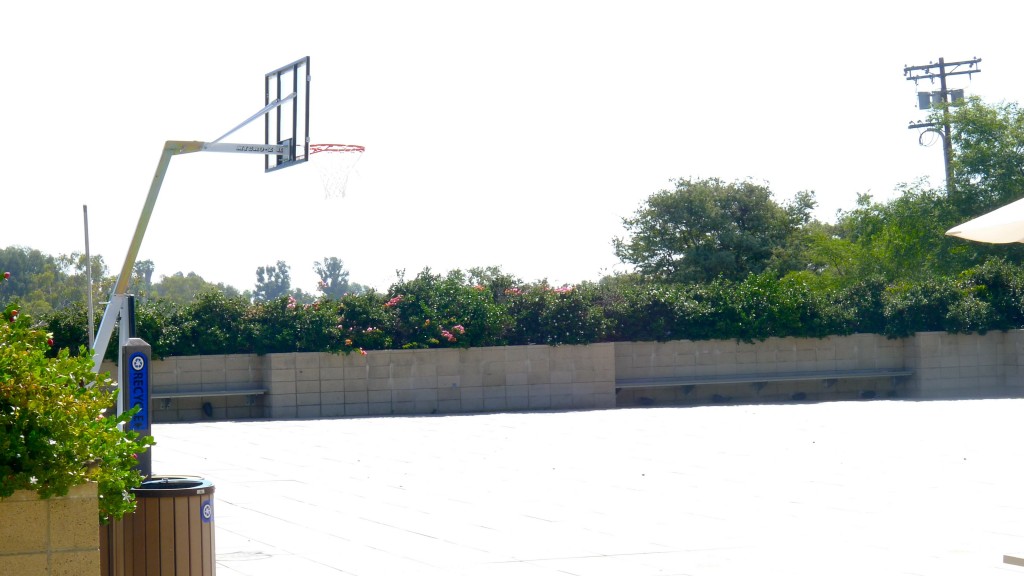
Admission to St. Matthew’s is competitive. The school is especially popular among Palisades and Brentwood families. However, both Stu and Jane pointed out that they encourage families to remain on their active wait-list if they are not admitted right away. The St. Matthew’s wait-list is one that does have spaces open up and admits families.
The primary points of entry are Preschool 1 and 4th grade, with spots open at 5th and 6th grade. Kindergarten admission is based on attrition from the preschool. “Keep applying” Stu and Jane told me is their message to families who are wait-listed. For those who are not part of the St. Matthew’s parish, being active in your own religious institution can be an asset for admissions.
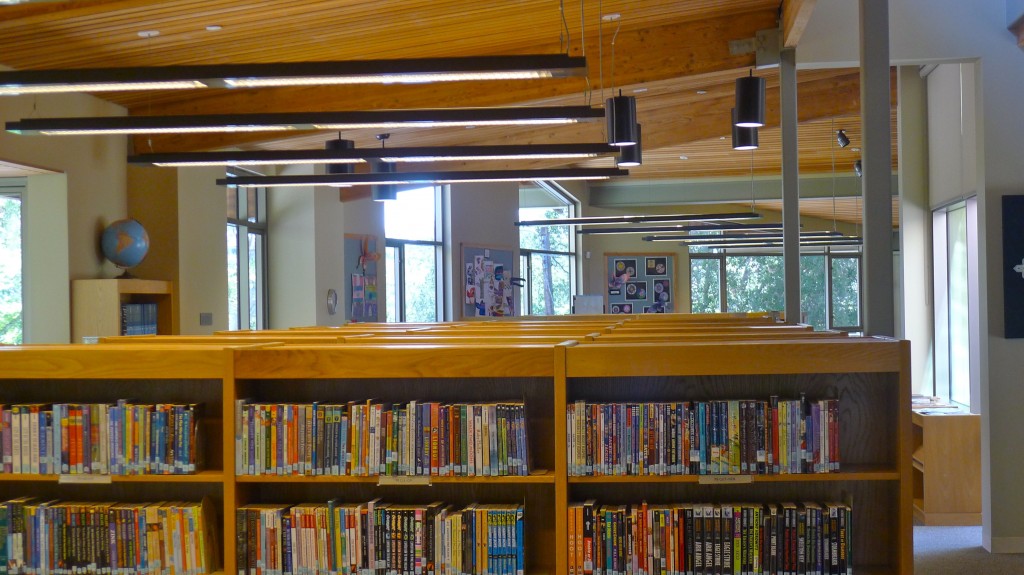
St. Matthew’s is certainly a school for a traditional family looking for that perfect mix of rigorous academics, faith and community.
As one of my Palisades mom friends told me, “St. Matthew’s is really popular among the Palisades moms.”
Now I know why!
For more information, visit, www.stmatthewsschool.com
A sunny L.A. morning last week found me visiting Stephen S. Wise Elementary School for the first time. Headed by principal Tami Weiser, this Jewish Day School is tucked away on a picturesque campus nestled in the trees, accessible from a small private drive off Mulholland in Bel Air.
Tami welcomed me graciously into her office where Beth Behar, the admissions director, joined us. Our conversation flowed from general private school observations to the popular school Tami oversees. Within a few minutes, I quickly realized this is a school with a lot to offer!
Tami is an educator with many years of experience who is constantly seeking the best scholarly ideas in education to implement at the school. She is vibrant and likable. Her mood sparkles as she proudly talks about two of their signature programs: The Gifted Education Partnership with USC and The Studio Lab.

Tradition With A Twist
When I asked how she would describe the school’s educational philosophy, she responded, “This is a traditional school within a Reform congregation.” Speaking with the confidence we all want from the principal responsible for educating our kids, Tami was quick to point out there is a lot of experiential education taking place, making the school a hybrid of new and traditional ideas. She was also effusive in her praise for the staff and board, who help make these ideas come to life.
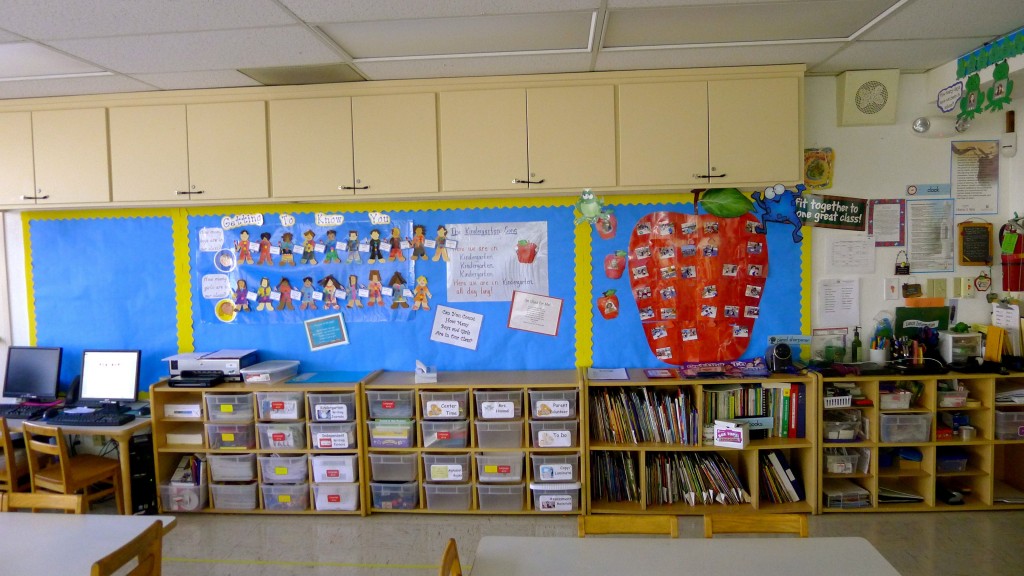
Walking around the sprawling campus with its low slung buildings that are punctuated by open spaces, Beth, one of the friendliest and most knowledgeable directors I’ve met, was happy to showcase the school. From the kindergarten classroom to the kindergarten play yard, kids dressed in their blue uniforms, were happily buzzing with activity.
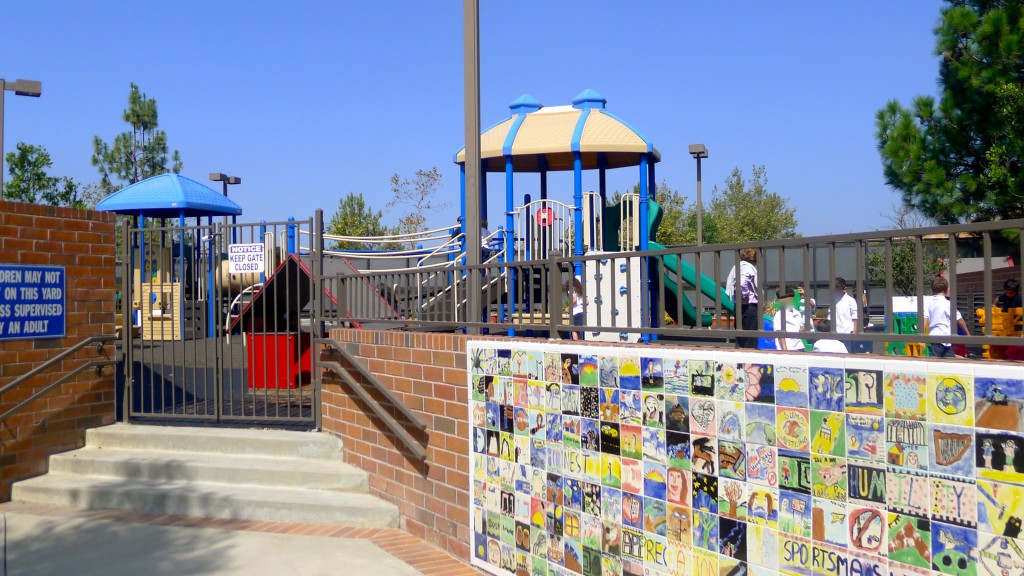
Stopping by a math class, we saw kids gathered on a rug as the young, energetic teacher discussed a math concept. They were focused and engaged. Science class students were finishing up a project.
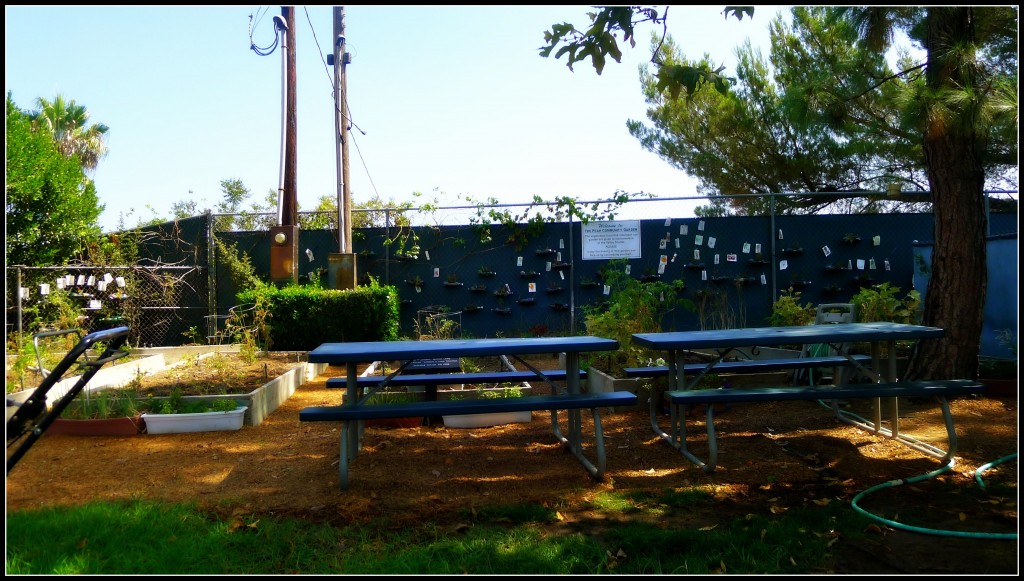
Gifted Education, Re-interpreted
One of the school’s signature programs is its unique partnership with USC Professor Dr. Sandra Kaplan, a gifted education expert. Putting their combined talents to work, the elementary school and the University have created implemented a program that ensures “every student is exposed to a gifted curriculum and high level learning experiences.”* This collaboration between the principal and the professor is an integral part of the school’s curriculum for every kid, not only those who are gifted.
Weiser shares, “It is our belief that children are gifted in different ways; be it intellectually, creatively, artistically or athletically. Stephen S. Wise Temple Elementary School recognizes and cultivates these gifts.” *
According to the school’s website, “Our program provides a variety of teaching and learning strategies by grouping children according to their achievement in reading, math and Hebrew; and in homogeneous groups in writing, social studies and specialist areas of technology, science, music and art. These learning experiences provide children with the opportunity to build critical, problem solving and research skills, be creative and innovative, and exhibit leadership and responsibility.
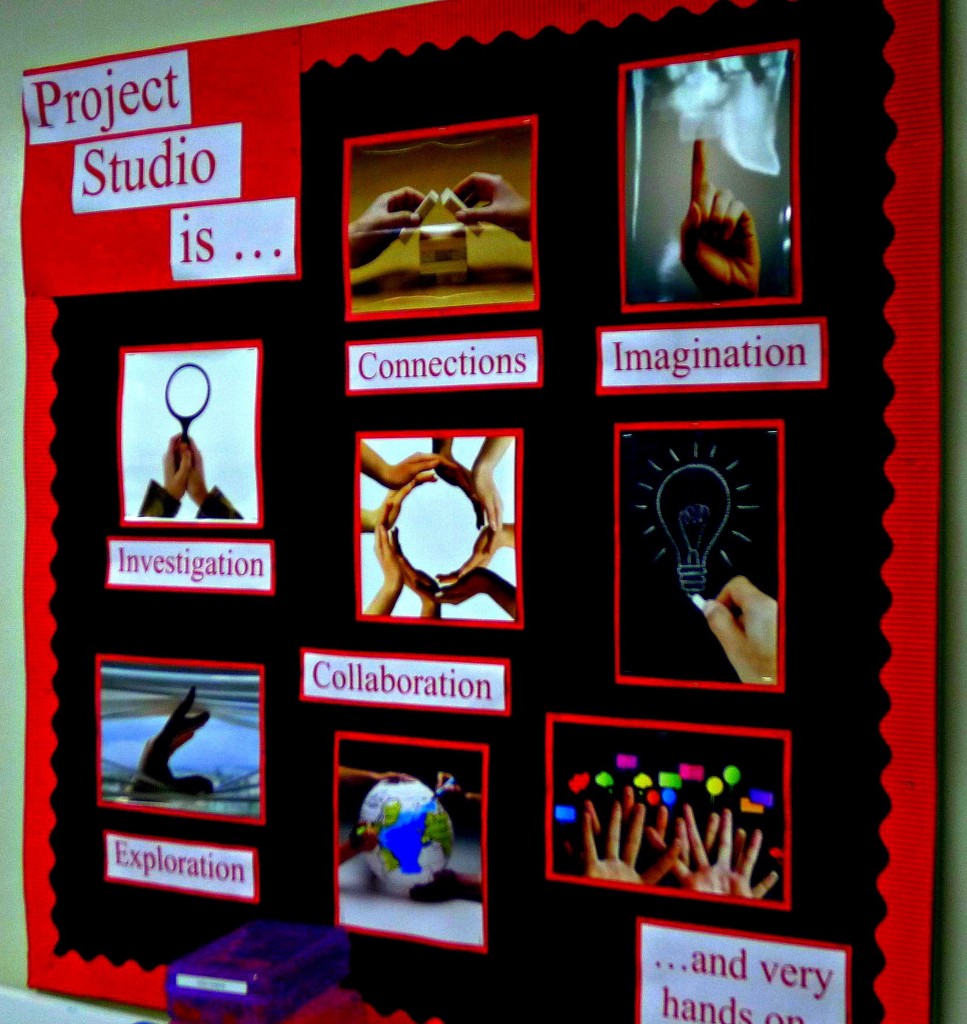
Project Studio
Entering Project Studio, teacher Jason Meth was busy setting up maps on the floor of a large open classroom before his students arrived. He explained that Project Studio is a space for kids to explore, solve problems and learn in a space without the constraints of tables, chairs and desks. This encourages connection and collaboration between students and between teacher and students. A smart board and other technologies are at the center of this inquiry-based program.
It is important to note that Jewish education is a major theme at Stephen S. Wise. Jewish ethical and spiritual values, along with Hebrew as a second language are taught.
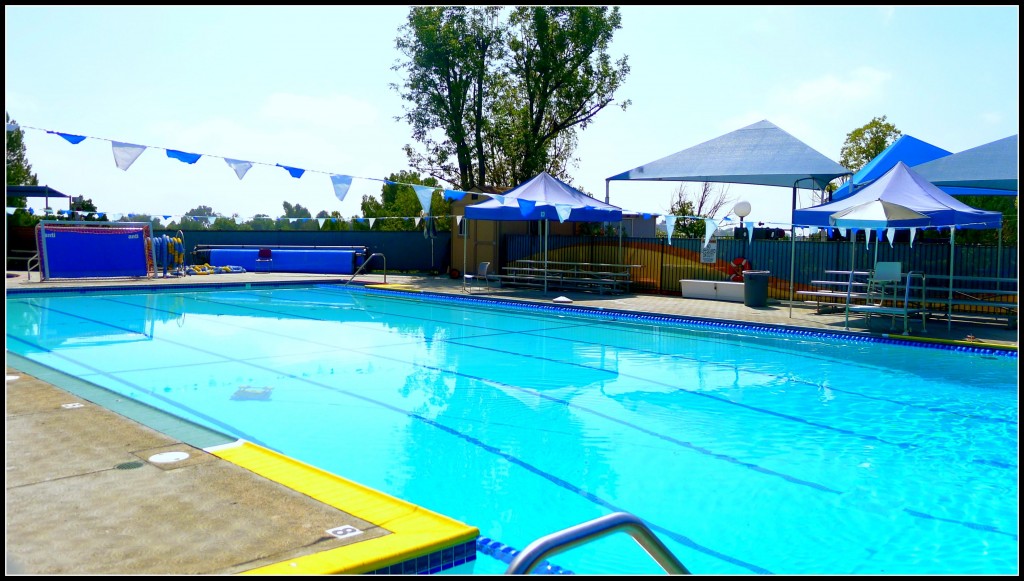
There are 350 students in the school, with two teachers per grade. Importantly, the school disburses $800,000 annually in financial aid (that’s a lot of money that is most welcome in these uncertain economic times).
Where Graduates Go
Most of the school’s graduates attend Milken Middle School and Milken Community High School of Stephen S. Wise Temple, but of those who did not, all 21 were accepted at secondary schools of their choice. Graduates attend Milken, Harvard-Westlake, Brentwood, Buckley, Windward, Campbell Hall, Oakwood and Archer.
My experience touring Stephen S. Wise Elementary School provided me with an up close look at a remarkable school.
For more information, visit, www.wiseelementary.org
* Source: Stephen S. Wise Elementary website
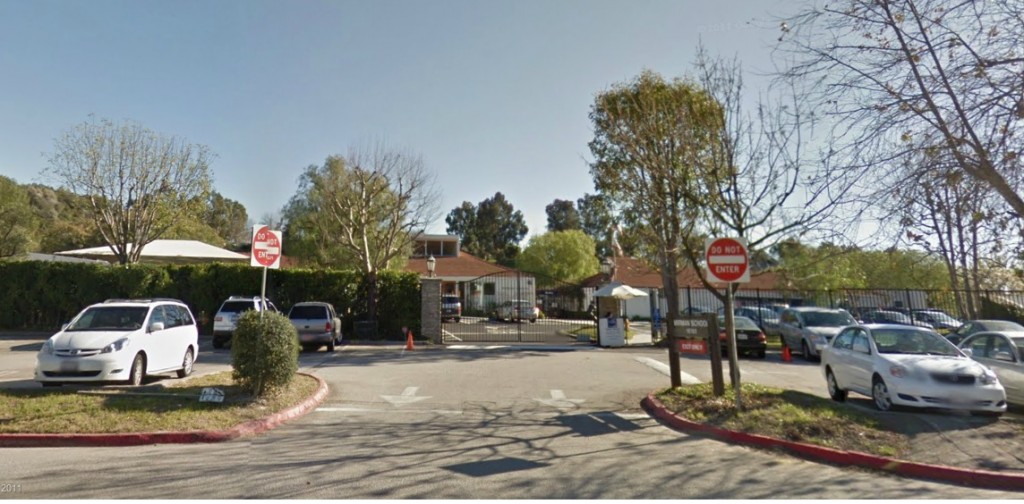
The word “nurture” means to nourish or feed, either in the form of food and sustenance or skills and education. By that definition, any Los Angeles private school has a “nurturing” environment. Each educates children every day, and most even gives them a balanced lunch, too.
But, (sigh) “nurturing” has taken on a much more involved and expanded definition according to our crop of private school helicopter parents. Apparently, “nurturing” also means listening to and respecting everything the child says or desires, not letting them ever feel bad for even a moment about themselves (this includes bad grades that they earned), praising everything they do (no matter how mediocre it might be), and just generally kowtowing to the so-called “self esteem” movement (a movement which actually has produced kids with lower self esteem, but don’t get me started on that rant).
Thus, when parents are looking at private schools, they might be looking for the most “nurturing” environment, a place where their child is accepted for who she is in everything she does (even if she turns out to be disruptive, disrespectful, and refuses to eat her broccoli). Some schools do better at presenting the “nurturing” image better than others; The Willows School, for example, has a sterling reputation in this regard. In some ways, these schools appear to be nurturing the parents’ needs, not the children’s.
Well, my child doesn’t go to The Willows. My child goes to Mirman, a school with an air of mystery. What do they do there? I’ve heard it called (from rather clueless sources) everything from elitist (any private school earns this adjective in an instant) to “the Nazi school” (obviously listening to Rush Limbaugh instead of reading the brochure). So what’s the story? Is Mirman “nurturing?”
My daughter didn’t enter Mirman until 4th grade. She was understandably nervous about going to a new school with kids who’d mostly been there since Room 1 (there is no kindergarten). She was also uptight about the academic expectations; Mirman is a school for “highly gifted” students, and Anna came from public school. She worried about having to play catch up.
From the first day, Anna settled in quickly. Her teacher, a real pro, was kind to her while still expecting excellent work. Anna’s emotional comfort was greatly considered; nasty girl politics were shut down. Friends were made. Lunches were eaten. All in all, it was the easiest school transition Anna has ever had. Sure, she was the “new girl” for the first year. But that’s life.
If you define “nurturing” as educating, I honestly can’t think of a school that does a better job. The kinds of assignments they’re given are pretty extraordinary. Mirman teaches the kids to work in small groups, and encourages them to analyze their group’s dynamic in order to improve performance. Honest self-evaluation is a valuable skill, and Anna learned it early. From self-analysis comes improvement, and that’s a true self-esteem booster.
Is the school squishy and warm and full of free time? Well, no it’s not. Mirman students are smart and wily; they’re a tough room. Mirman teachers are hyper organized and structured, because highly gifted children need to keep their brains occupied at all times. Those kids are stimulated all day long with constant knowledge and problem solving. They’re encouraged to have good manners (my daughter’s manners skyrocketed) and be able to make good conversation. They’re also expected to manage their own time, be responsible for their own work, remember the school’s honor code, and use their school distributed laptops according to the school’s ultra strict use agreement they signed.
Does that mean there’s no jokes or hugs? Of course not! Students get plenty of positive feedback, when it’s merited. The students are still treated like children, not like adults. Anna has had great, funny , respectful relationships with her teachers. This respect is reflected in the way the students treat one another; I’ve seen no substantive bullying or mean girl behavior there.
I think Mirman nurtures students in the best, purest possible way. The education is incredible, the social skills invaluable, the campus itself a lovely little oasis where the nerdy kids can be themselves. What’s more nurturing than that?
You know whom they don’t nurture? The parents! Seriously, the school just wants parents to drop the kids off, pay the tuition, help out when asked, and otherwise vaporize. And I’m totally fine with that, because my daughter gets exactly what she needs to thrive.
Jenny Heitz Schulte has worked as a staff writer for Coast Weekly in Carmel, freelanced in the South Bay, and then switched to advertising copywriting. Her daughter started 4th grade at Mirman School in 2010. She previously attended 3rd St. Elementary School. Jenny has been published in the Daily News and on Mamapedia, The Well Mom, Hybrid Mom and A Child Grows In Brooklyn. She now writes about gift ideas and products on her blog, Find A Toad.